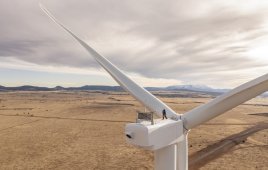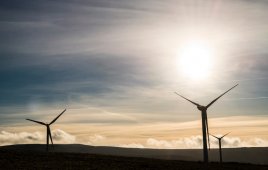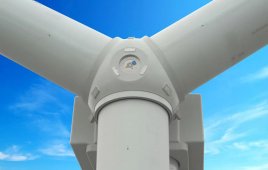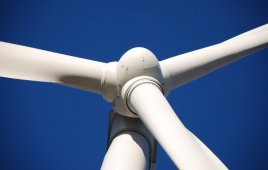Probably the most significant accomplishment in the bearing industry over the last ten years is the better understanding of what happens to bearings in wind turbines. Researchers and OEMs have defined their loading, vibration, temperature extremes, and identified a few peculiar hazards such as stray electrical currents. This information is driving several industry trends.
“For example, we need to consider main-shaft bearings as part of a complete unit that includes lubricant, a seal, and housing,” says SKF Strategic Technical Manager Dave Mikalonis. “Analyzing as an assembly improves the reliability of the bearing, which is another trend across the board: bearing reliability whether it’s on a main shaft, in the gearbox, or a generator. We’re better at understanding the influences of operation on the application enough to provide the most durable bearing to meet the turbine’s life expectancy.”
Another trend, says Mikalonis, is insulating bearings to protect them from stray electrical currents in generators. “The stray currents take a path of least resistance to ground which is often through a bearing where it can cause pitting and early failure. A couple solutions include coatings that insulate bearings from stray currents and hybrid bearings, those with silicon nitride rolling elements and steel races. The hybrid bearing provides natural insulation, and also provides benefits with lubrication because it can run for periods with poor lubrication.”
The industry is beginning to recognize the bearing’s role in turbine drive train efficiency. “Bearing designs are becoming available with energy efficiency in mind through the use of improved internal geometries and cage designs” says Mikalonis.
In addition to bearings, how they are lubricated has also been improved with the use of automatic greasing systems that provide the proper amount of grease at the proper interval. “It’s much better to relube a bearing with small amounts more frequently, than with a large amount less frequently,” says Mikalonis. “Condition monitoring is another trend in the push for reliability. This equipment predicts maintenance problems before they occur and become costly by impacting the availability of the wind turbine.”
Other trends might be identified if manufacturers could review the bills of material from turbine OEMs. “They keep such lists close to their vests, so it’s difficult for O&M personnel to develop a strategic spare parts inventory for after warranty work,” says NTN America’s Joe Kahn. “Not long ago, O&M crews would reactively change bearings and stick with the manufacturer the OEM selected. Lately, we’ve seen a shift to search for bearings from a short list of trusted manufacturers, which gives others the opportunity to add value to repairs either through reduced bearing acquisition costs or improved bearing performance. For generator bearings, some prefer ceramic-coated versions and some hybrid ceramic bearings.”
Kahn says many manufacturing plants worldwide gives companies like his a degree of flexibility. “That means bearings can be made where they’re consumed, which reduces the logistics and duty costs. In addition, inventories sufficient to support wind O&M has brought large inventories into our Midwest warehouse to ensure the right parts are in stock and ready to go before a turbine goes down and that expensive crane is on site.”
Bearing R&D engineers, such as those at Timken, say they and other have identified the wear that limits the life of main shaft spherical-roller bearings, and it is not classical rolling contact fatigue. It’s mostly micropitting wear caused by an interaction of the raceway and roller asperities, leading to high stresses in the contact. Normal stress alone is not typically sufficient to initiate a crack at or near the surface early in a bearing’s life cycle. However, the addition of frictional shear stress increases the bulk contact stress values and brings the maximum values closer to the surface, allowing these localized stresses to become significant under the asperity contacts. This type of interaction typically occurs when the lubricant film is insufficient to separate the contacts and when there is relative sliding between the two contacting surfaces. This is known as low-cycle micropitting.
WPE
Filed Under: Bearings, Components, Turbines




